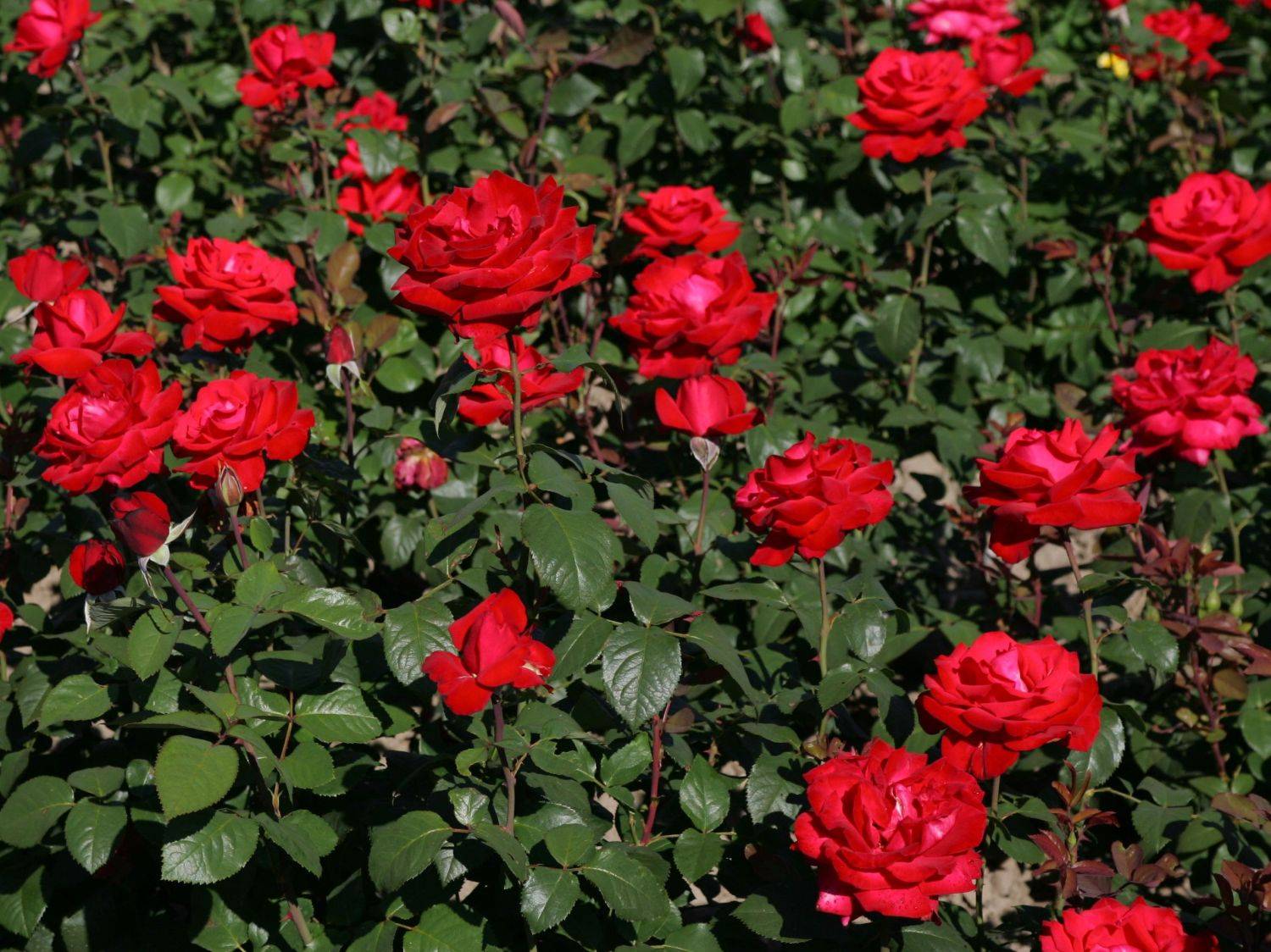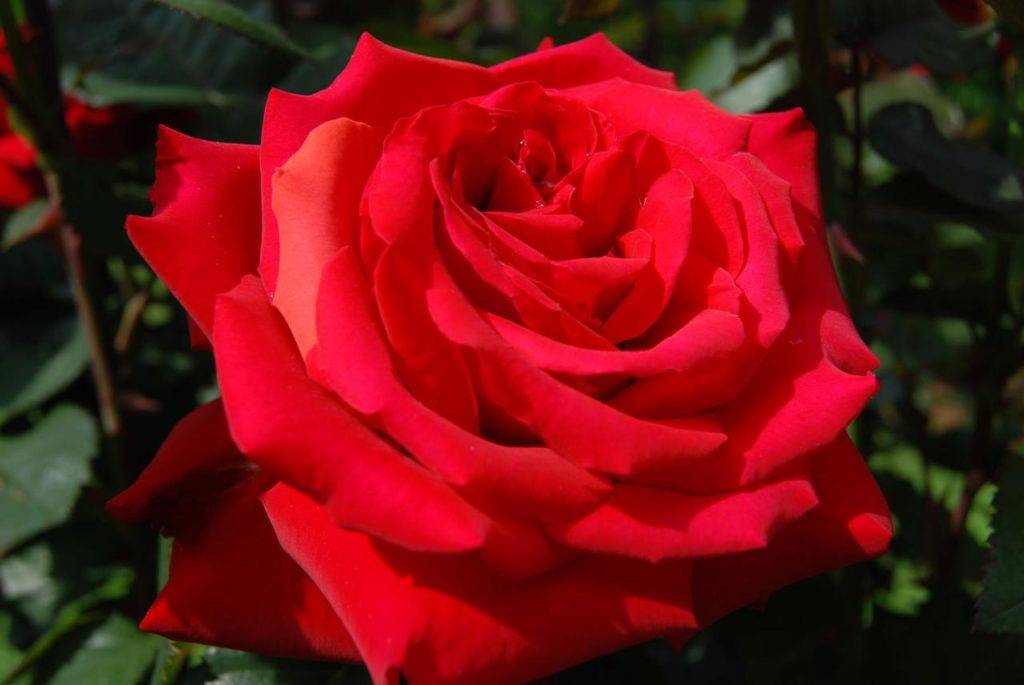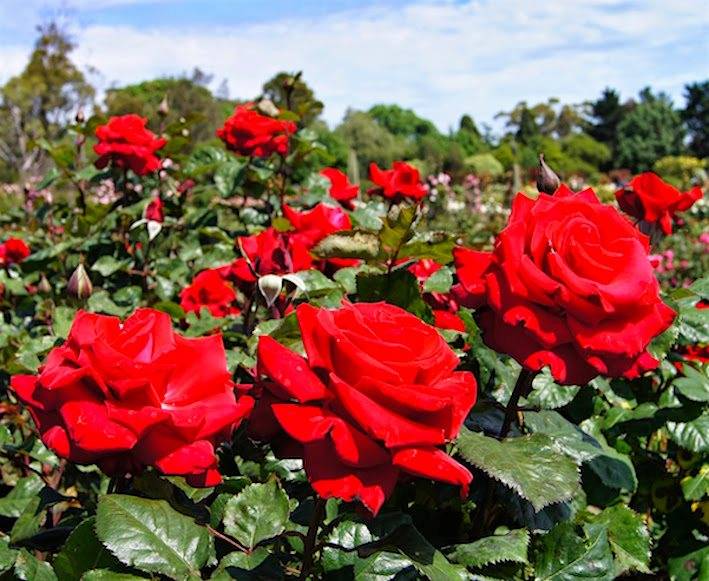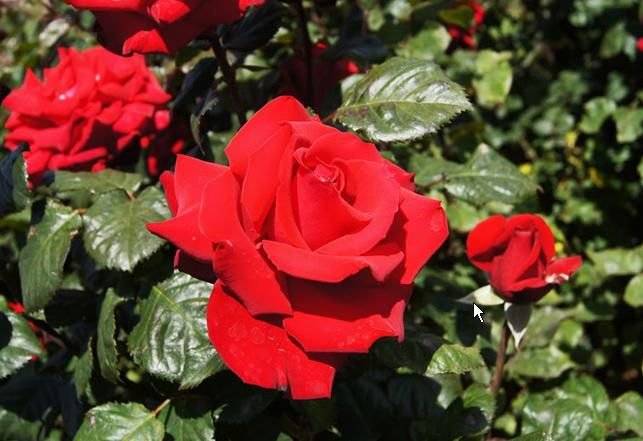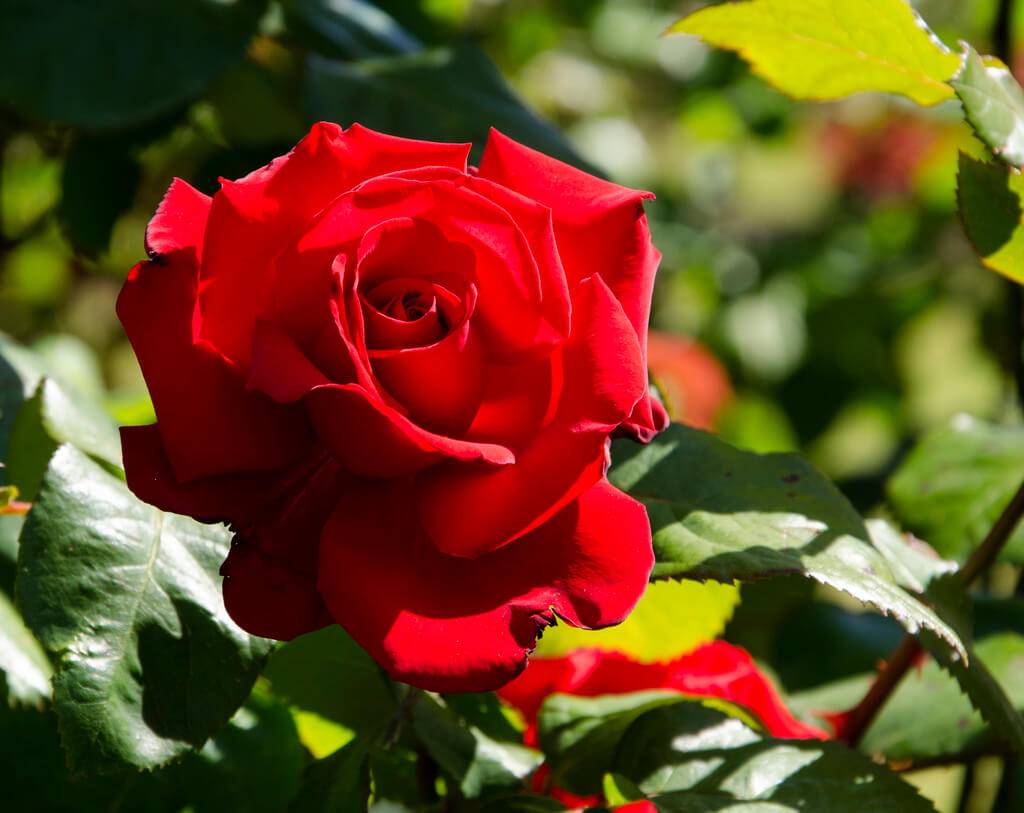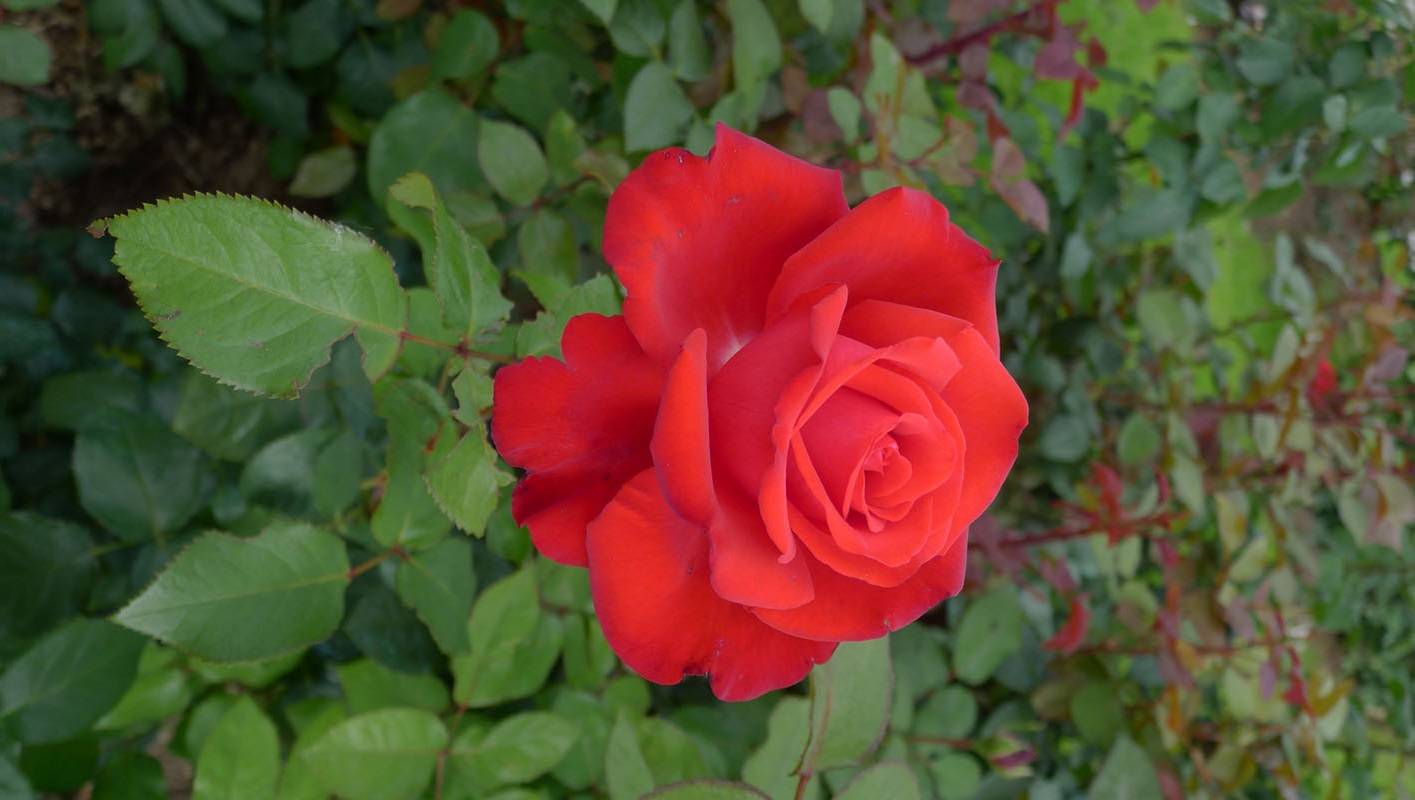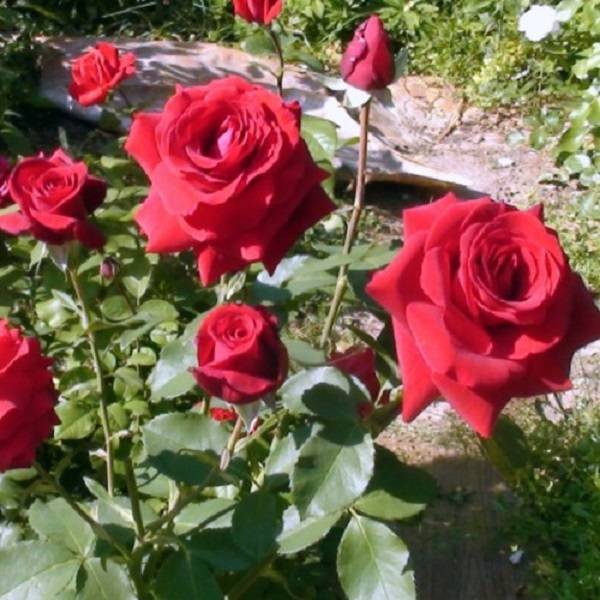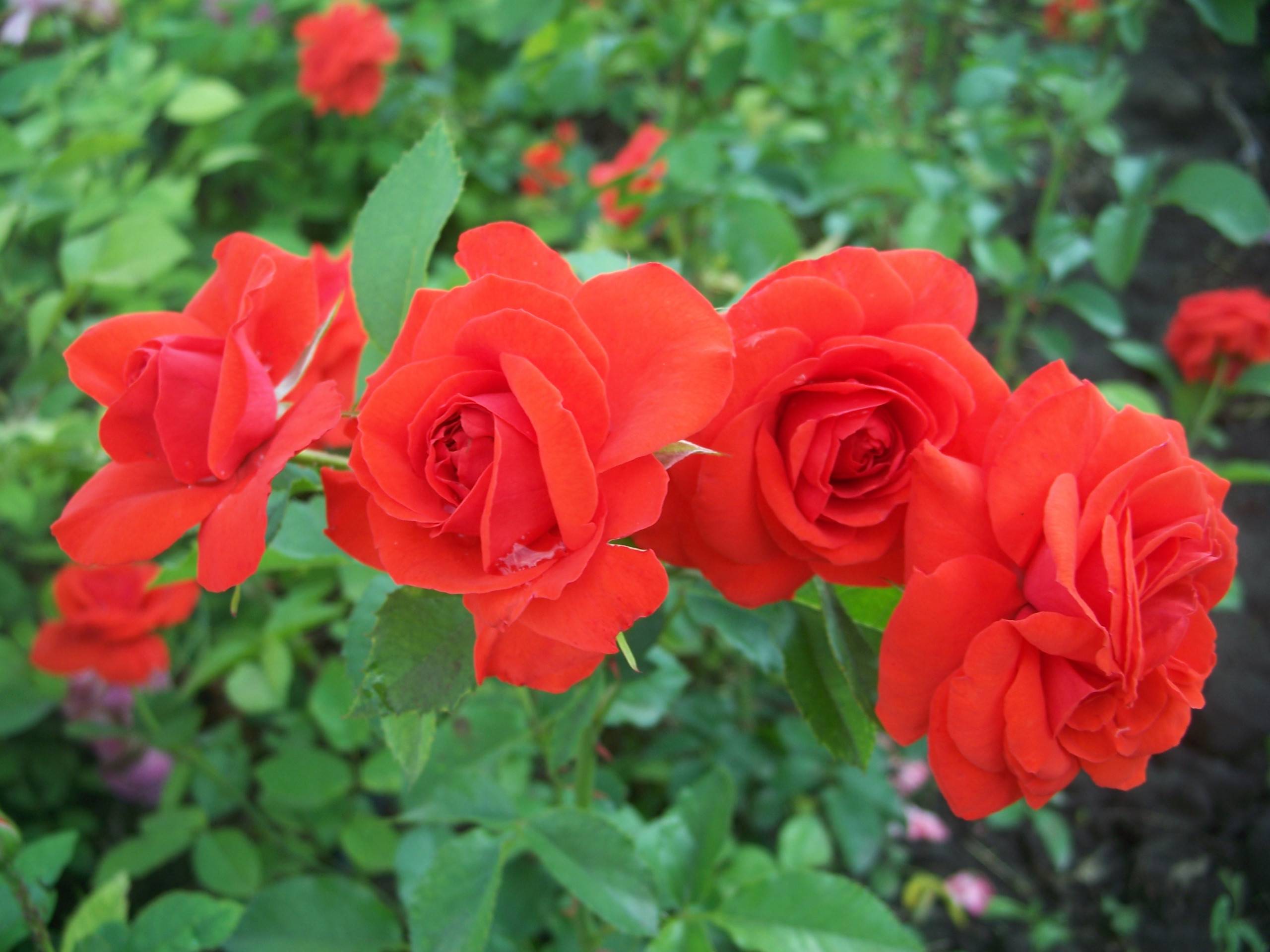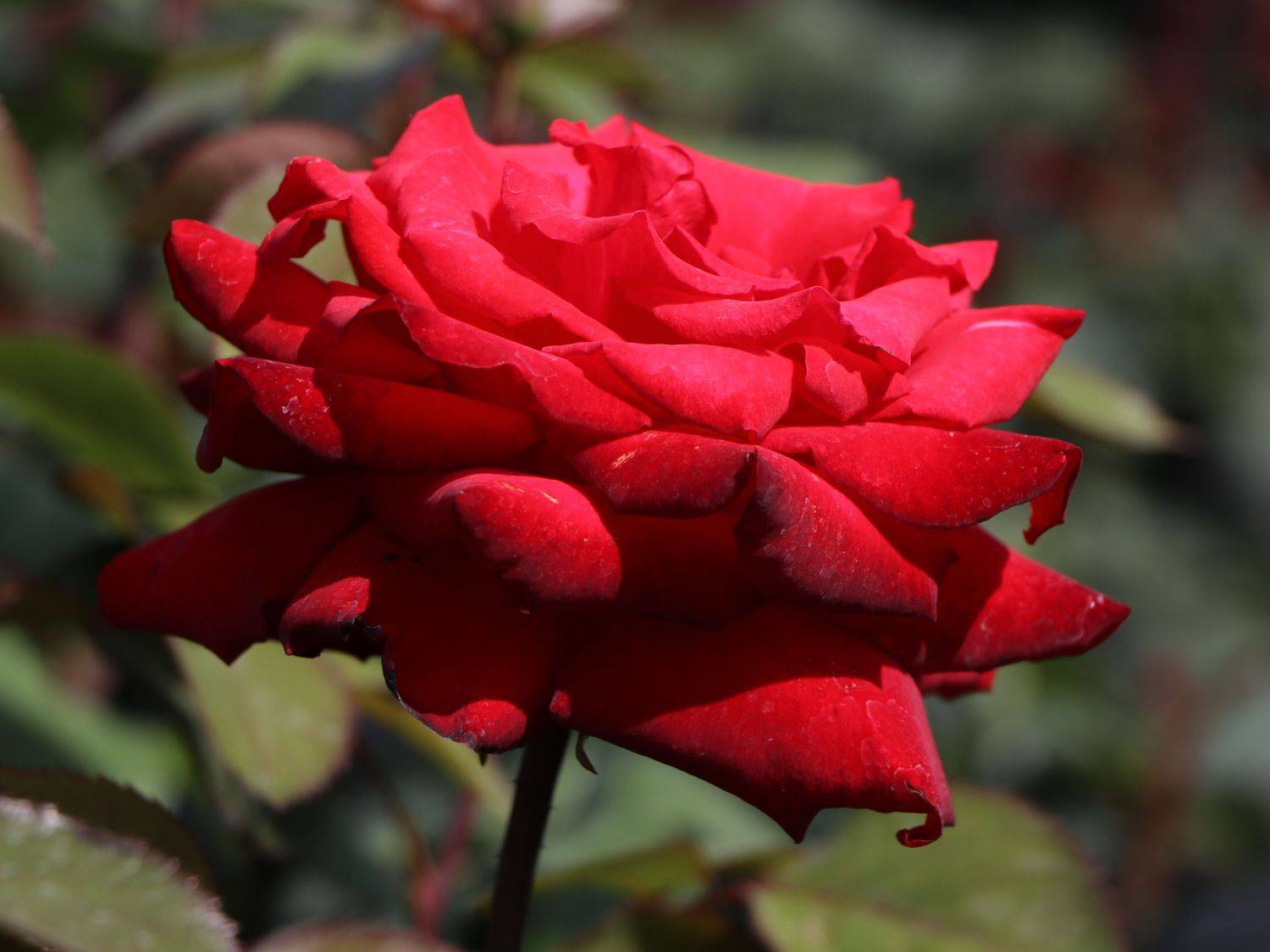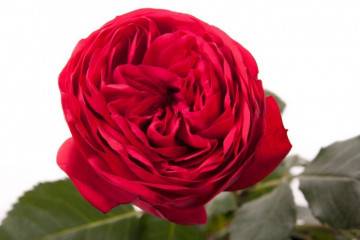Rose Grand Amore (Grande Amore) - what is this hybrid tea variety
Content:
The magnificent bright scarlet rose Grand Amore will decorate a summer cottage, a city garden, a flower bed, a rose garden. Bouquets are made from it, because it lasts a long time after cutting. This rose blooms profusely, so you can admire its beauty all summer long.
Rose Grand Amore (Grande Amore) - what is this variety
Rose Grande Amore belongs to the group of hybrid tea flowers. This variety was bred by German breeders in 2004. It is a hybrid variety of several tea and garden roses. The new flower turned out to be more resistant to diseases, adverse weather conditions and pests than other flowers.
A similar variety with the same name was bred in 1968. It differs from Grande Amore in that it has a stronger aroma, and the buds are larger in size. Over time, the variety, bred in 2004, began to be called the Super Grand Amore rose, but this name did not catch on.
Brief description and characteristics
Fragrant red roses easily tolerate rain and drought. The description and characteristics of this flower contain many details. The stem reaches 80 cm in height. The rose bush grows up to 40 cm wide. Straight branches are covered with dark green leaves. The bush blooms strong, lush flowers with a diameter of 9-10 cm, shaped like a bowl. Each rose consists of 35 delicate satin petals of scarlet, burgundy or bright crimson shades. The buds open slowly, which increases the flowering time.
Advantages and disadvantages of the variety
Grand Amore roses are incredibly beautiful and unpretentious, but not every florist can grow them.
Grande Amore benefits:
- decorativeness, beautiful appearance;
- pleasant aroma;
- blooms for a long time;
- tolerates difficult weather conditions: wind, rain, heat;
- frost resistance;
- strong immunity against diseases and pests;
- unpretentiousness and easy care. Even an inexperienced florist can grow them.
Disadvantages:
- the plant needs winter shelter;
- the root system needs to be strengthened after planting;
- it is necessary to constantly remove faded buds and feed the soil.
Use in landscape design
It is advisable to plant large red flowers in the very center of the garden or park. You can choose for them the main flower bed or any other place where you want to focus the attention of the beholder. Monoplants of Grand Amore look very impressive. This rose can be grown in compositions with herbaceous plants or wildflowers.
Growing a flower: how to plant it in open ground
It is not difficult to grow and care for this flower. If you follow all the rules of care, then the rose will delight the grower for many years.
If the Grand Amore flowers have already grown in the summer cottage, then during pruning, strong branches are cut from them and cuttings are rooted. You can buy ready-made seedlings in the store.
What time is the boarding
It is necessary to plant pink bushes and seedlings in the spring, when the earth warms up well enough under the sun. The beginning of May is ideal for planting, it is by this time that warm weather sets in.
Seat selection
This plant needs a place where there is a lot of sunlight. But this area must be well protected from drafts and gusts of wind. The soil should be fertile and loose.
How to prepare the soil and flower for planting
Roses thrive in nutrient-rich soil. Soil acidity (pH) should be 5.5–7.2.
How to prepare your landing site:
- Dig a hole 60 cm deep.
- Drainage is placed at the very bottom - a layer of expanded clay, crushed stone or pebbles 10 cm thick.
- The next layer is organic fertilizers (compost, mullein, manure). The thickness must also be at least 10 cm.
- The soil is laid on top, prepared from humus, turf, leafy earth, peat and sand.
Planting procedure step by step
After the planting pit is ready, you need to place the plant there:
- Seedlings must be treated with a disinfectant (for example, potassium permanganate).
- Put in water for 24 hours, adding a root growth stimulator.
- After a day, the seedling is removed from the liquid, set in a pit and sprinkled with earth.
- The soil is compacted tightly and watered abundantly with warm water.
Plant care
Taking care of the Grand Amore rose is quite simple, so this variety is very popular among novice florists. It is necessary to water, feed, cut and replant the flower on time, as well as cover it for the winter.
Watering rules and humidity
The rose is watered once a week. Each flower will need at least 5 liters of warm water. The plant is watered at the root, trying not to get on the leaves and petals.
Top dressing and soil quality
Lush flowering depends on how fertile the soil where the rose bush grows. From early spring to late autumn, you need to fertilize the rose with organic matter every 2-3 weeks: compost, mullein, eggshells, chicken droppings.
In the spring, Grand Amore needs to be fed with nitrogenous fertilizer. In summer, potassium-phosphorus preparations are introduced into the soil.
Pruning and replanting
You need to prune the rose 3 times a year. Each pruning is done for a specific purpose.
Types and times of trimming:
- spring preventive. The rose bush is opened after a long winter and damaged, frostbitten, diseased shoots are removed;
- summer formative. Remove dried and faded buds, carry out the formation of a bush;
- autumn preventive. Weak and thin branches are cut off.
An adult rose can be transplanted once a year in spring or autumn. For this, the buds are cut off, the shoots are shortened. Then the flower, together with the root, is removed from the ground and transferred to a new place along with an earthen lump.
Features of wintering a flower
Grand Amore can withstand light frosts down to -8 ° С. In late autumn, the flower must be covered for the winter. In this form, it easily overwinters at temperatures from -20 ° C to -23 ° C.
How to make a winter shelter:
- Carry out a deep pruning of the bush.
- Sprinkle the roots of the plant with sand. The thickness of the layer should be about 20-30 cm. You can spud the bush.
- Cover the plant with fir branches.
- Install low metal supports and cover them with any non-woven insulation.
- Fix the plastic wrap on top.
- Leave small holes at the bottom on the sides so that air can flow to the roots.
Blooming rose
Grand Amore is a re-blooming rose. It blooms magnificently from early summer to autumn frosts. The flowering is wave-like: some buds fade, others new ones bloom.
A period of activity and rest
The growing and flowering periods end in mid or late autumn. Then the rose is covered with insulation until the first days of spring.
Care during and after flowering
It is necessary to regularly inspect the rose bush and remove faded buds. No other specific care is required for the plant.
What to do if it does not bloom
In the first year after planting in a flower bed, Grande Amore does not bloom. The rose suffers greatly from a lack of lighting and feeding, from an excess of dried flowers. All this leads to the fact that the rose does not bloom.
Flower propagation
The ideal breeding method for Grand Amore is by cuttings. This can be done during the planned pruning of the bush.
You can propagate a flower by cuttings in summer or early autumn. Shoots should be cut early in the morning or in cloudy weather, because the bright sun can burn the damaged bush.
How to propagate a rose by cuttings:
- Several healthy and strong shoots should be cut from the bush. This should be done at an angle of 45 °.
- Remove all leaves except the top two.
- Choose a shaded area and root the cuttings 2-3 cm deep in the ground.
- Cover them with a cut-off plastic bottle or glass jar.
- If the plant has taken root, leave it in the ground for the winter. At the end of spring, it can be transplanted to a lighter place.
Diseases, pests and ways to control them
Despite the excellent health of the Grand Amore rose, it needs to be treated with medicinal products to prevent disease. In a rainy summer, fungal infections are very dangerous for the plant, so it is regularly sprayed with fungicides.
Dangerous diseases and pests:
- powdery mildew;
- gray rot;
- rust;
- bear;
- green aphid;
- penny;
- leaflet;
- spider mite.
A lush red rose will be an exquisite decoration for your garden or vegetable garden. This flower will always be in the spotlight. It is easy to care for him, and the result will bring a lot of joy to the grower.
